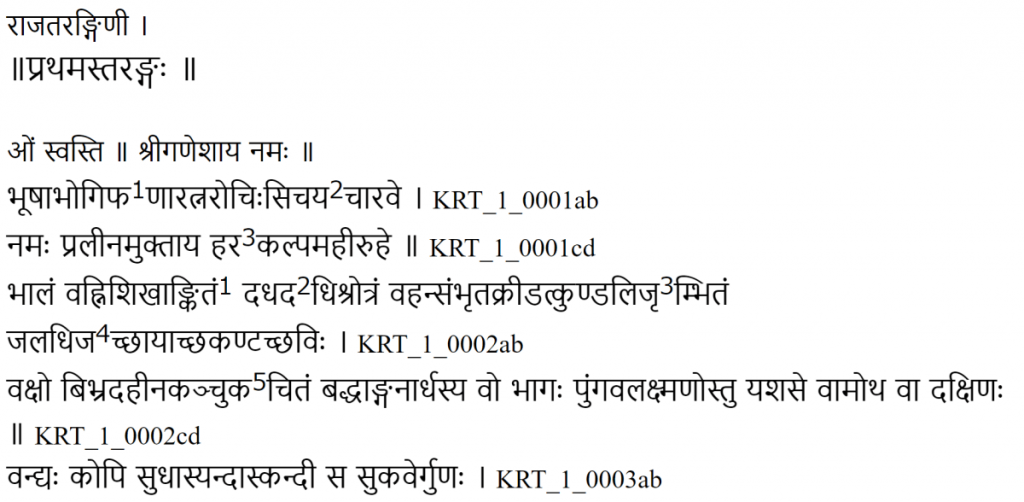2025/03/12
Building an online digital resource based on the Swahili dictionary published from ILCAA
2019/10/29

This project publishes digitized texts of “Rājataraṅgiṇī,” a Sanskrit historical chronicle compiled in Kashmir in the mid 12th Century with search functions.
Talking about history of South Asia, it is often said that “India has no historical record.” This phrase is incorrect in two senses. First, historically there are “varmśāvalī (genealogy book)” and “itihāsa purāṇa (old folktale)” in India as genres in Sanskrit and Prakrit literature, which can be included in historical descriptions. Second, the above phrase has a tacit assumption that “Indian common languages” are only Sanskrit and Prakrit; there are many historical records written in Persian language in pre-modern times of South Asia.
Anyway, surely there have been very few history books written in Sanskrit which can be called “history of dynasties” in pre-modern times of South Asia. An almost exceptional book is this “Rājataraṅgiṇī (River of Kings).” The author Kalhana is a poet of the Hindu Brahmin caste who probably served King Jayasinha of the second Lohara dynasty, the ruler of Kashmir. He finished writing the book between 1148 and 1149. Kalhana wrote this book comprising 8 chapters and 7826 verses, which state the history of each dynasty in Kashmir from pre-history to the era of King Jayasinha, by using various available historical resources such as documents, epigraphs, antiquity, etc. It is a literary quality masterpiece written in outstanding verse.
In this project, we digitized texts of “Rājataraṅgiṇī” based on recension compiled by Aurel Stein in the 19th Century by inputting it as Devanagari script data, and published one of the most important historical record on the ancient and medieval history of South Asia in a convenient form for researchers.
(Author: Satoshi Ogura)
Reference:
<Digital Data of Indian and Historical Documents: Rājataraṅgiṇī>